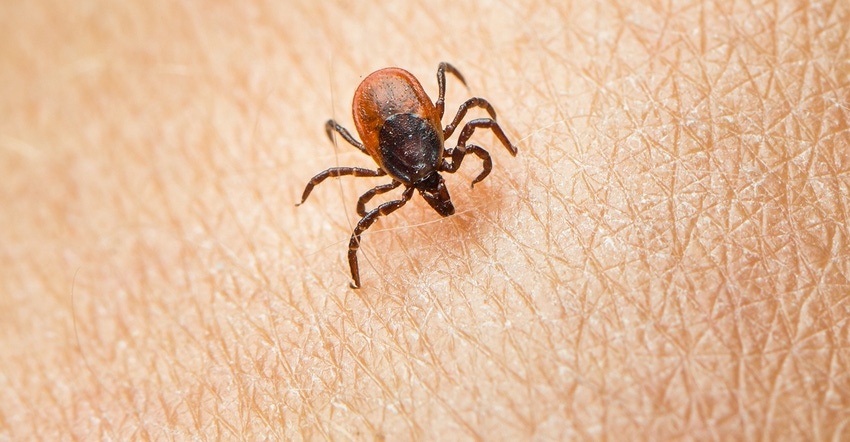June 2, 2017

It started out with my husband mismanaging a straw in his mouth. He could not feel it on one side, and the soda just dribbled out. I looked over at him and noticed that one side of his mouth was drooping. I asked him to smile. That side did not rise up. Fear began to well within me. Had he had a small stroke?
We called the family doctor and were seen right away. When they called my name to come back, I feared the worst. Our doctor asked about a tick bite. He noted that a bite from an infected tick can lead to Lyme disease and it can present as Bell's palsy, which results in partial facial paralysis.
Our doctor did not take any chances and prescribed some medication for treatment. Still, for the next three weeks, my husband had a saggy face. But it also started up our vigilance in searching for ticks after walking the pasture, mowing the lawn and doing chores.
Protect yourself
According to the Missouri Department of Health and Senior Services, ticks are responsible for more human disease than any other insect. Cases of Rocky Mountain spotted fever, ehrlichiosis, tularemia, Q-fever, Lyme or Lyme-like disease, and southern tick-associated rash illness have been reported in Missouri.
However, according to the Centers for Disease Control and Prevention, Lyme disease is the most commonly reported tick-borne disease in the U.S., with about 300,000 infections occurring yearly.
The good news, according to Dr. Pam Duitsman, nutrition and health specialist, University of Missouri Extension, is that not all ticks are infected.
She offers the following tips to reduce the chance of being bitten by a tick this summer:
1. Wear light-colored clothing, so spotting ticks is easier.
2. Tuck your pant legs into your socks so ticks cannot access your skin.
3. Use insect repellent containing 20% DEET, picaridin, or IR3535 on your skin. This will protect for several hours. When applying repellent, avoid your hands, eyes and mouth.
4. Use permethrin on clothing, boots and socks. Permethrin can kill ticks as well as mosquitoes and chiggers, and may even be protective through several washings if applied to fabric correctly.
Time to check
Ticks can attach anywhere on the body but are most frequently found around the head, neck, ears, underarms, behind the knees, inside the belly button, around the waist, and in the groin area.
When back indoors, inspect your skin carefully, as well as your clothes. Bathe or shower as soon as possible (within two hours) to wash off or find ticks that may be on you. If a tick has attached, remove it immediately. The longer it stays attached, the greater risk of infection.
Tick removal
There are several tick removal devices are available on the market, but a plain set of fine-tipped tweezers will remove a tick effectively.
"Position the tips of tweezers around the area where the tick's mouthparts enter the skin," Duitsman says. "Then, with a slow, steady motion, pull the tick away from the skin, without twisting or jerking, since this can break off the tick and allow some of it to remain in the skin."
After removal of the tick, disinfect the skin with soap and water, then with rubbing alcohol or an iodine scrub. Dispose of a live tick by submersing it in alcohol, placing it in a sealed bag or container, or wrapping it tightly in tape. Never crush a tick with your fingers.
If you do not remember seeing a tick on your body, or being bitten, but experience an unexpected summer fever or odd rash, or have symptoms related to a tick bite, Duitsman says to seek advice from a healthcare provider.
You May Also Like




